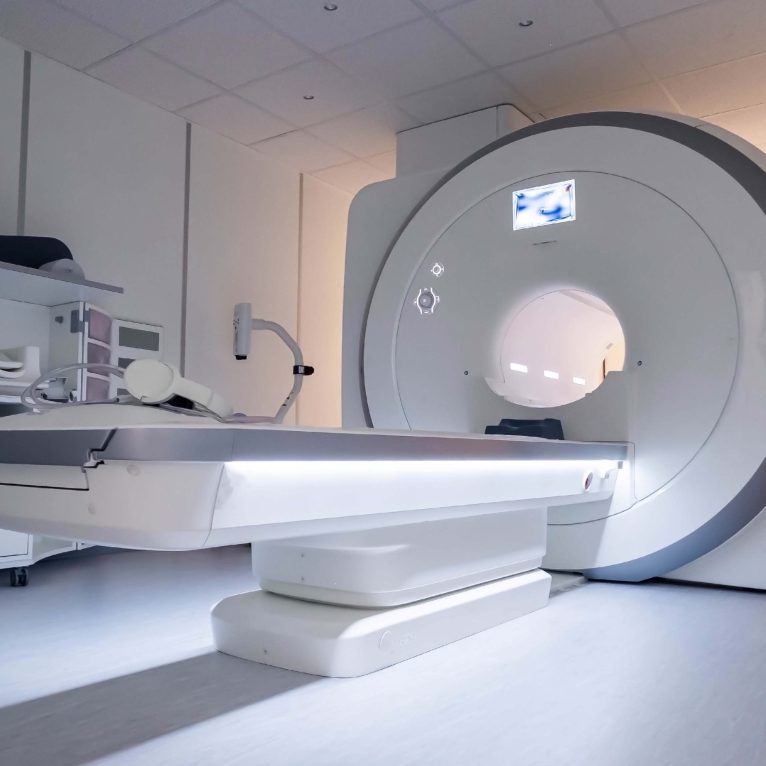
Written by

Cranfield, UK, 9th July 2024, Written by Bhvita Jani –
In 2023, the MRI equipment market experienced an impressive 11.8% year-over-year revenue growth. This surge was largely driven by pent-up demand resulting in record order books in addition to inflationary pressures that drove pricing upwards. In Western Europe, a robust recovery during this period was propelled by increased public spending on post-COVID service line improvements and the satisfaction of pent-up demand.. Furthermore, the easing of supply chain challenges resulted in shorter lead times for MRI installations.
Unit shipments reached over 6,300 in 2023 and are set to exceed 7,400 by 2028. However, healthcare providers continue to contend with workforce shortages, highlighting the urgent need for more streamlined workflows to manage the growing backlog of MRI procedures.
The market is anticipated to rebalance in 2024 after a particularly strong 2023. As such, the outlook for 2024 seems weaker due to rising political risks in the US and global macroeconomic uncertainties. By late 2023 to early 2024, the pent-up demand caused by COVID-related supply chain issues is projected to diminish, with record order books returning to more typical levels. In contrast, China is expected to see a market rebound and recovery.

Clinical trends propelling the MRI market
Alzheimers:
New US funding for research into Alzheimer’s and other neurodegenerative diseases is boosting MRI demand. The Leqembi drug trial uses MRI screening to monitor side effects and disease progression. With pharmaceutical companies focusing on neuro MRI, mid-term demand is expected to rise, sustaining the premium US market. However, the lower image quality of the recent Ultra-low Frequency (ULF) market developments limits uptake. Additionally, Artificial Intelligence (AI) ‘s maturation for stroke triage drives investment in new MRI-based AI tools for neurology.
Prostate:
MRI for prostate screening is gaining traction, driven by studies comparing it to prostate-specific antigen (PSA) testing, which is subsequently influencing European guidelines. New AI tools like Cortechs.ai, Saige (DeepHealth), and Lucida Medical are improving diagnosis and reporting by utilising real-world evidence. However, adoption is hindered by limited screening programs, inadequate funding for prostate AI, and lack of reimbursement. The high MRI costs versus PSA tests remains a barrier. Stronger evidence on patient outcomes and return on investment (ROI) is crucial for broader acceptance. A patient-driven “out of pocket” model, akin to RadNet ECBD, may emerge if payers are hesitant.
Liver:
The first Non-alcoholic Steatohepatitis (NASH) treatment in North America is set to boost demand for MRI liver imaging to monitor treatment effectiveness, with similar expectations for Europe. Multiparametric AI tools, like Quibim’s new offering launched in Europe in early 2024, enhance the quantified assessment of liver fat and iron. However, in Asia Pacific, despite increasing attention to liver disease and high Non-alcoholic fatty liver disease (NAFLD) prevalence, liver imaging volumes remain low due to limited funding and investment in new AI tools. Notably, there are currently no National Medical Products Administration (NMPA) approvals for liver AI tools in China.
Cardiology:
MRI’s potential in cardiac functional assessment for cardiovascular disease is growing, supported by increased investment in AI for faster cardiovascular magnetic resonance (CMR) image interpretation, which is traditionally labour-intensive for radiologists. Recent studies highlight AI’s role in assessing pulmonary arterial hypertension and enhancing contrast CMR for diagnosis and screening. Challenges to wider CMR screening adoption include slow reimbursement processes, limited MRI access in many markets, and less investment in CMR AI compared to CT, where Heartflow and Cleerly lead the segment.
Rising adoption of AI-enhanced workflows
Despite billions of US$ invested in AI image analysis software vendors, leading MRI equipment OEMs are also heavily investing in AI to enhance MRI hardware. This AI-driven image enhancement has become crucial for differentiating products and sustaining demand for new generations of MRI equipment.
The rapid adoption of AI-based image acquisition and reconstruction technology, especially in new 1.5T systems, has led some industry experts to predict declining demand for 3T systems. Many believe AI-enhanced 1.5T systems will become the standard for most scans, except in advanced research or specialist centres.
The market for AI-based MRI tools is projected to reach nearly $350 million by 2027. However, MRI is still a smaller market compared to high-volume screening applications like stroke, cardiac FFR-CT, lung screening, and mammography.
Nevertheless, substantial research funding into neurodegenerative conditions and increased MRI availability could make AI most impactful in speeding up and improving MRI scan readings. Startups are gaining attention from cardiac MRI, liver assessment, abbreviated MRI for breast cancer diagnosis, and other conditions, which are targeting less competitive segments as leading AI markets mature and consolidate.
Balancing provider priorities
A strategic approach to technology provision emphasises long-term partnerships with MRI providers focused on clear KPIs and service enhancements, rather than simply adopting the newest technology. Efforts are underway to reduce waiting times for MRI access by expanding MRI technology into new settings such as point-of-care, mobile units, and dedicated extremity facilities, thereby alleviating pressure on conventional mid- and high-field systems.
The increasing demand for virtual technician support and centralised command centres for MRI fleet management reflects a shortage of a specialised workforce. Operational strategies like managing multi-vendor fleets or implementing a “hub and spoke” model are crucial for smaller centres with limited staffing, such as community hospitals and orthopaedic centres. Service-line optimisation focuses on operational tools to streamline patient throughput and accelerate scans through improved image enhancement and protocol setup, aiming for faster scans, fewer errors, and enhanced patient safety.
There is also a notable trend towards adopting low- or no-helium MRI systems, offering greater infrastructure flexibility by eliminating quench pipes. This supports the broader deployment of MRI technology across various locations, considering the growing scarcity and higher cost of helium. However, energy consumption remains a consideration, particularly amidst elevated energy prices.
Future outlook
Expanding clinical applications, increased implementation of AI-driven workflows, and rapid technological innovation position the MRI market for mid-single-digit revenue growth through 2028. Chinese vendors are aggressively expanding domestically and globally, posing a growing threat to established global players. The outlook for 2025-2028 is promising, with increased demand expected in screening, neurology, cardiology, and oncology. However, tightening healthcare budgets in mature markets like Western Europe and Japan may impact growth.
MRI vendors are demonstrating the long-term value of their investments through smart subscriptions, lifetime coil guarantees, and managed contracts where core components do not require replacement. They are also striving to enhance manufacturing sustainability by developing lighter MRI systems that require less energy and use recyclable materials, thus reducing their carbon footprint and improving access and precision medicine. Effective sustainability initiatives are being implemented to enhance efficiency and reduce costs for hospitals and care providers.
Related Research
MRI Equipment – World – 2024
The second edition of Signify Research’s “MRI Equipment Market—World—2024”. It provides a data-centric and global outlook of the market. The report blends primary data collected from in-depth interviews with MRI vendors to provide a balanced and objective view of the market.
About The Author
Bhvita joined Signify Research in 2020 as part of the Medical Imaging Team, focusing on the X-ray market. Prior to joining, she brought with her 4 years of experience covering X-ray, MRI, and CT research at IHS Markit. She received her bachelor’s degree with honours in Biology and Psychology from Aston University.
About the Medical Imaging Team
Signify Research’s Medical Imaging team formulates expert market intelligence for some of the leading Ultrasound, CT, MRI, and X-ray vendors. Combining primary data collection and in-depth discussions with industry stakeholders, our thorough research approach yields credible quantitative and qualitative analysis, helping our customers make critical business decisions with confidence. Furthermore, our commitment to seeking a plurality of perspectives across the markets we cover guarantees that our insights remain independent and balanced.
About Signify Research
Signify Research provides healthtech market intelligence powered by data that you can trust. We blend insights collected from in-depth interviews with technology vendors and healthcare professionals with sales data reported to us by leading vendors to provide a complete and balanced view of the market trends. Our coverage areas are Medical Imaging, Clinical Care, Digital Health, Diagnostic and Lifesciences and Healthcare IT.
Clients worldwide rely on direct access to our expert Analysts for their opinions on the latest market trends and developments. Our market analysis reports and subscriptions provide data-driven insights which business leaders use to guide strategic decisions. We also offer custom research services for clients who need information that can’t be obtained from our off-the-shelf research products or who require market intelligence tailored to their specific needs.
More Information
To find out more:
E: enquiries@signifyresearch.net
T: +44 (0) 1234 986111
www.signifyresearch.net
